Our Verdict
The MelGeek Pixel ought to be everything I'm looking for in a wireless enthusiast gaming keyboard. Ultra-customisation, from the switches to the keycaps, and with the added bonus of LEGO compatible studding across the entire board. And yet it delivers an abysmal typing experience and the brick compatibility is a definite let-down, too.
For
- Functional wireless
- Hotswappable switches
- Packaging is cute
Against
- Terrible typing experience
- Too flexible plastic chassis
- Lot of money
- Lacks the QA of a genuine LEGO product
PC Gamer's got your back
There is much about the MelGeek Pixel that ought to speak to me on so many different levels. The first, quite obviously, is the LEGO styling. Though equally obviously MelGeek cannot claim any affiliation with the famous Danish brand. What it can do, however, is be "brick compatible" and by that it means a stud width and depth equal to the LEGO standard.
More or less.
Every part of the design is LEGO, sorry, brick compatible—from the keys, to keycaps, to indicator lights, to feet, to the entire surface of the board. Included in the $199 package are a bunch of extra bricks with which to adorn your Pixel keyboard, with funky pixel art style shenanigans, or cutesy messages.
Or you can use the bricks to add some extra height to the board at the back to give you a better angle to type on.
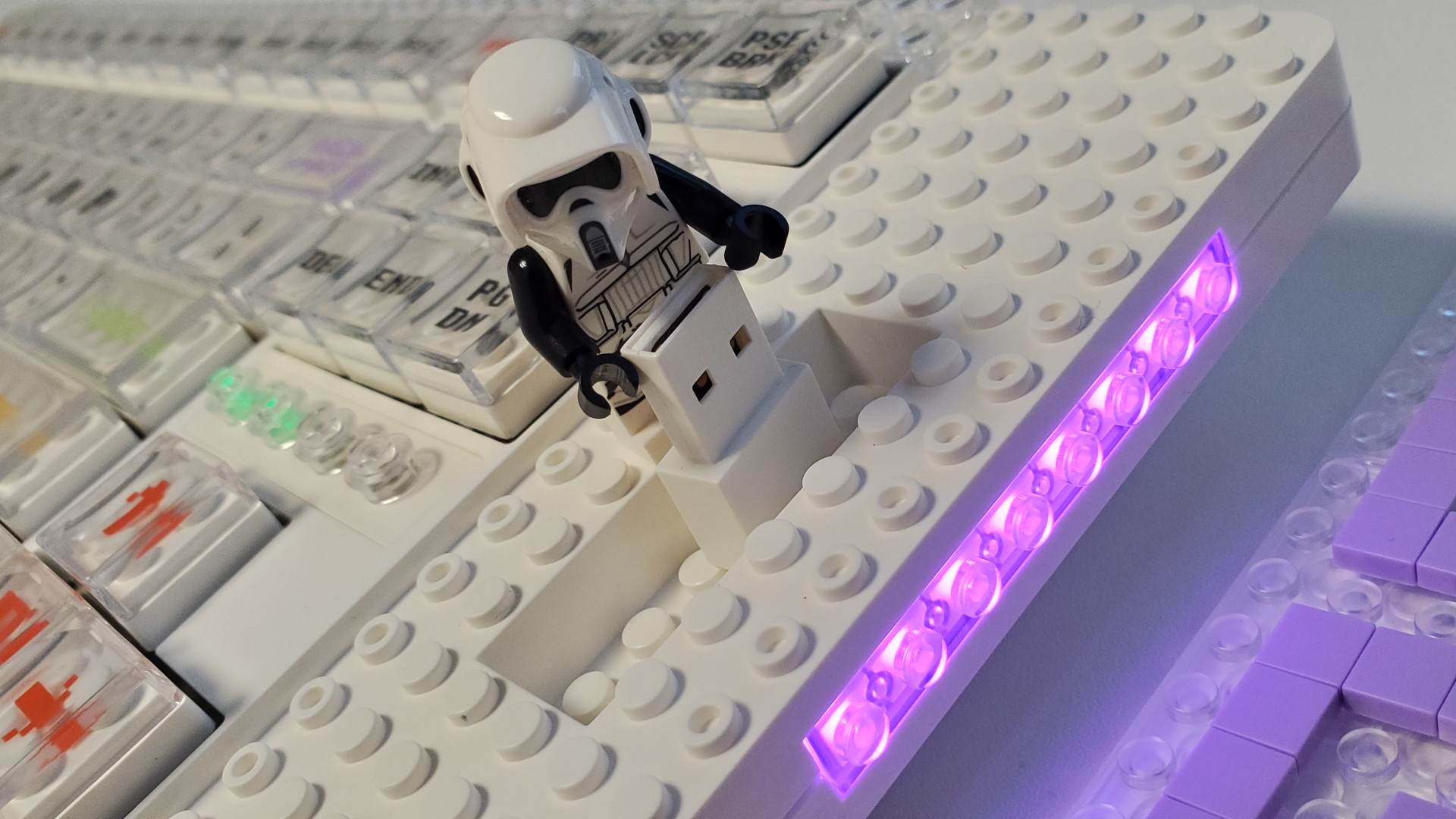
Size: Full 104-key
Connection: USB Type-C, 2.4GHz wireless, Bluetooth 5.2
Switches: Kailh and Gateron (linear, tactile, and clicky)
Hot swappable: Yes
N-key rollover: Yes
Price: $199
Then, when you get past the definitely not LEGO stuff, you end up with an enthusiast-class keyboard with hot-swappable mechanical switches that you can just pull out and replace at will. So long as you have a switch-puller, that is. You only get a keycap puller in the box. It's also a wireless board, too, with RGB lighting playing around the brick compatible edges of the chassis.
And that, sadly, is where all the positivity ends. Yes, it looks funky in that LEGO geek-chic way, but when something looks this much like a toy you'd be surprised if it didn't end up feeling like one. And I am not surprised by the Pixel.
For one, it is a genuinely horrible typing board. The actual Kailh Pixel T switches supplied in this review model are fine, but that's not the problem. Let me elaborate via a slice of unedited typistry:
The biog problem is that the keyus are just far too closer tgogerther to bve able nto deliver a particulartlty accurate touch-typing experience. They literally butt against erach other with the smooth, though concave brick compatibvle keycaps not really keeping your digits in check. IU munich prefer a board where there is at least a little separatiofg between the keys.
Also, with no palm rest, your hands are stuck at such an obvlique angle thatg you can'tr help b ut end up regularfly hittiong the key directly below the one you'rte aiming for.

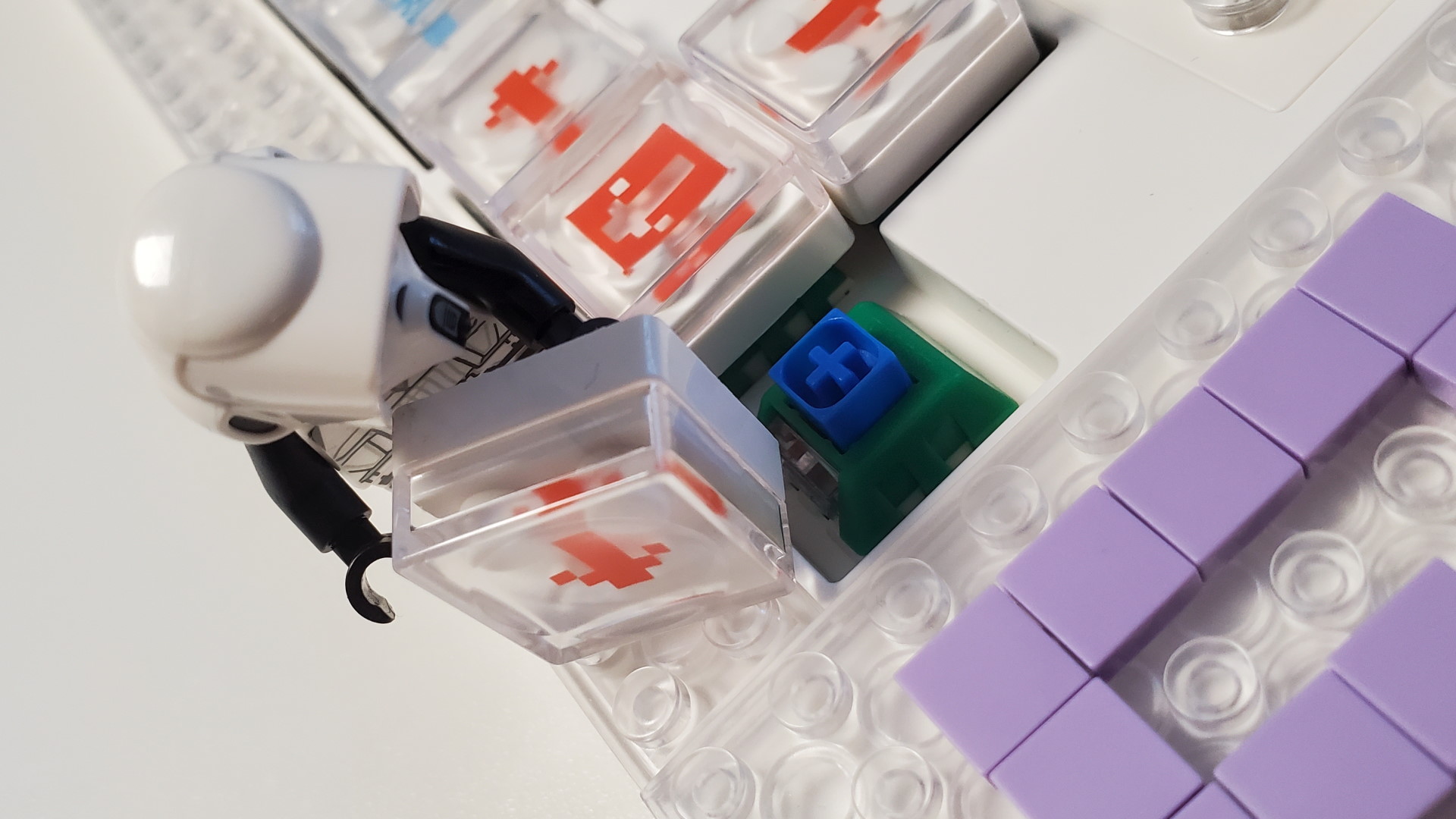
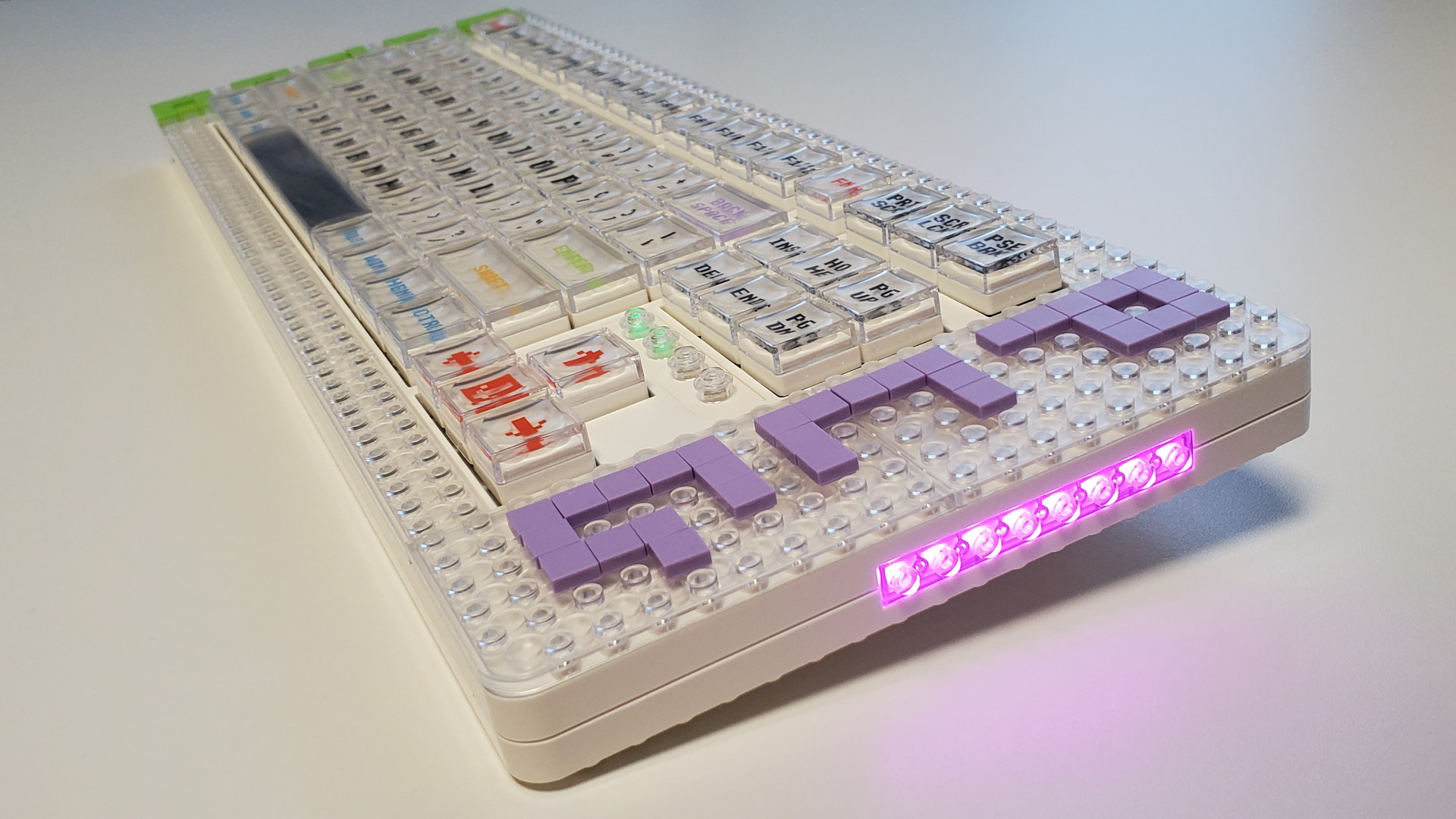
So yeah, not ideal by any stretch of the imagination. Especially if you spend most of your working life writing copy.
I get that MelGeek wants to nail the pixel aesthetic with the Pixel keyboard, and make it look for all the world like the sort of keyboard you'd actually find in a LEGO set, but for me it's just not worth it for the ultimate sacrifice in ergonomics.
There is one thing I do like, though, and that's the USB Type-C cable. It's a nice blue, flat one, and I appreciate the brick elements on each end of the wire.
My final issue, however, is all to do with its brick compatibility. There are a lot of things I can forgive in the name of LEGO, and if it was built with the same absolute rigid quality that has become the byword of the Danish megatoy then maybe I'd feel a little softer towards its overall failings as an actual keyboard. But the Pixel keyboard suffers from the same sort of QA issues as every other not-LEGO set I've ever experienced.
The often-unsung quality of LEGO is its rock-solid reliability. You 100% know that a brick you pick up today will be compatible with one from fifty years ago, and almost more importantly, it will have the same level of stickiness. The way LEGO blocks hold on to one another is key to its power as a building block, and that's something the knock off versions don't have.
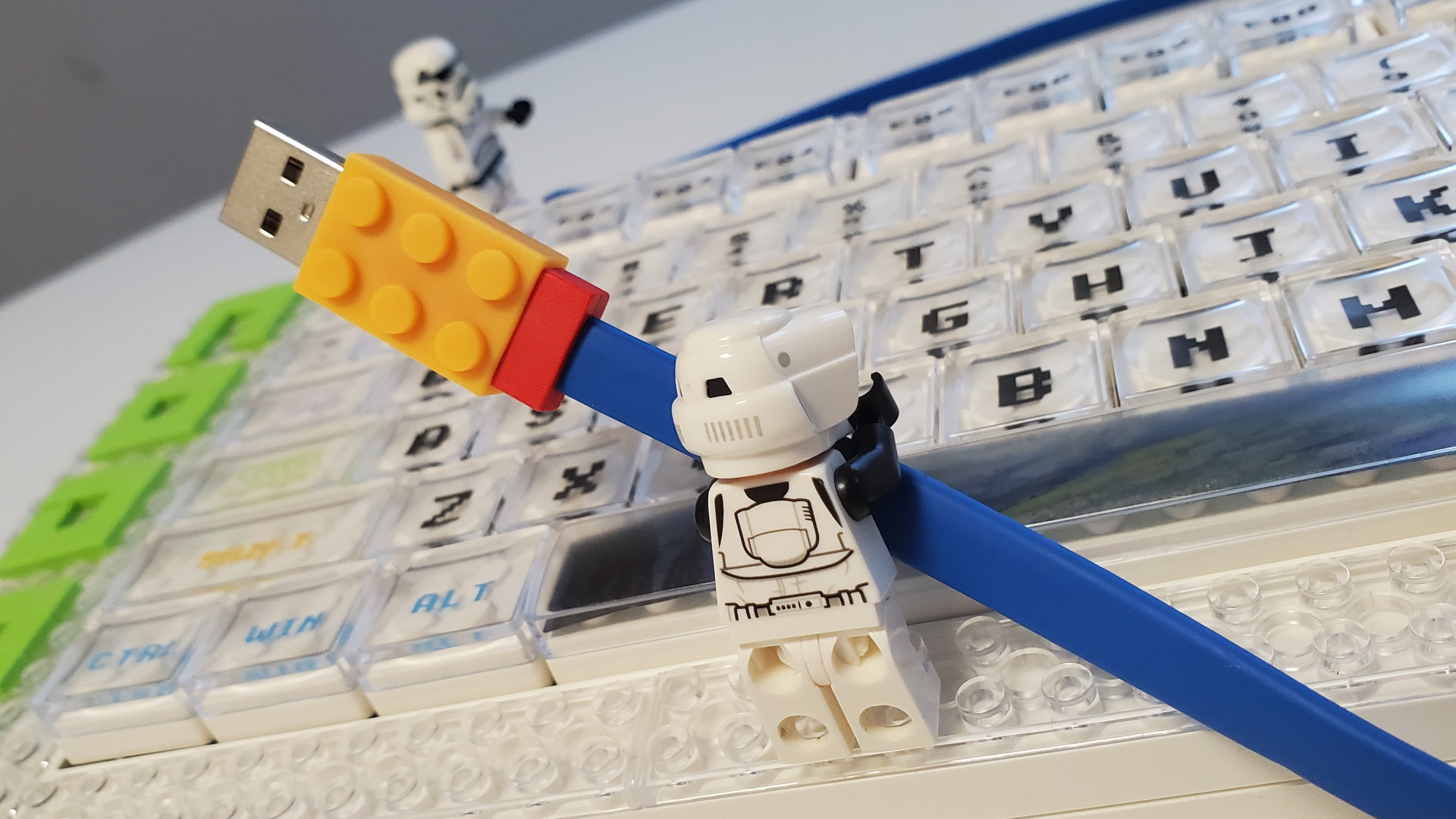
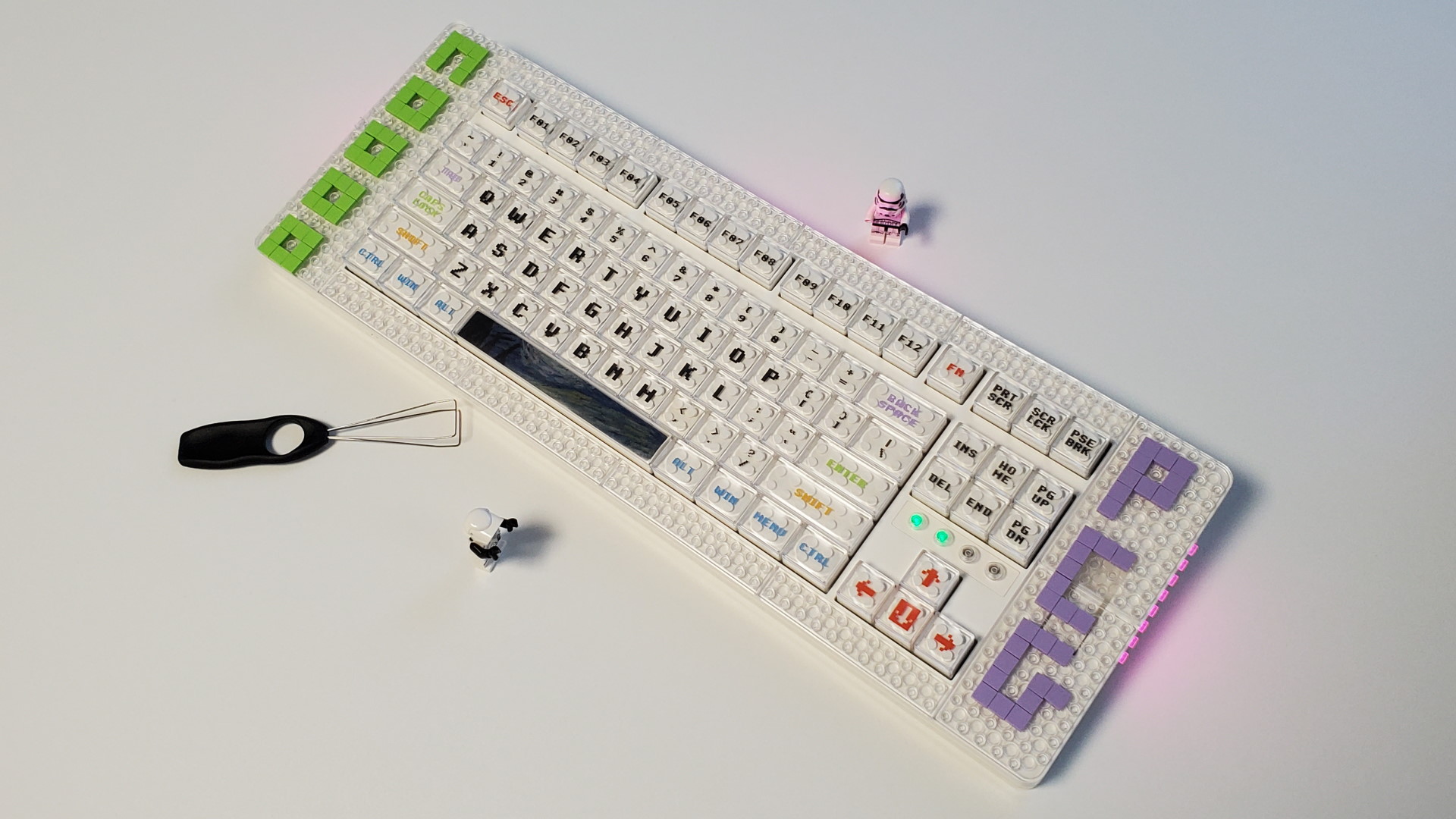


Maybe that's not a huge issue most of the time, but when you're relying on that strength of connection to form the feet of a keyboard, and the only way you can actually engender a vaguely effective typing angle, then having a set of legs that will just break off at the slightest motion is a problem.
The build quality problems extend to the chassis, too. This is a $200 keyboard and yet there is an abhorrent amount of give in the plastic chassis. There is no rigidity to it, and I don't have a lot of confidence in the device's longevity. And that's not a place I want to be when I'm being asked to spend this much on an enthusiast keyboard.
So yeah, for me it's a no. A strong no.
The MelGeek Pixel ought to be everything I'm looking for in a wireless enthusiast gaming keyboard. Ultra-customisation, from the switches to the keycaps, and with the added bonus of LEGO compatible studding across the entire board. And yet it delivers an abysmal typing experience and the brick compatibility is a definite let-down, too.

Dave has been gaming since the days of Zaxxon and Lady Bug on the Colecovision, and code books for the Commodore Vic 20 (Death Race 2000!). He built his first gaming PC at the tender age of 16, and finally finished bug-fixing the Cyrix-based system around a year later. When he dropped it out of the window. He first started writing for Official PlayStation Magazine and Xbox World many decades ago, then moved onto PC Format full-time, then PC Gamer, TechRadar, and T3 among others. Now he's back, writing about the nightmarish graphics card market, CPUs with more cores than sense, gaming laptops hotter than the sun, and SSDs more capacious than a Cybertruck.

